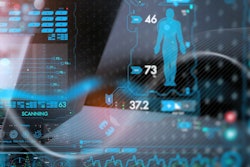Thursday, December 1 | 9:00 a.m.-9:30 a.m. | R5B-SPNR-8 | Learning Center -- NIR DPS
Augmented reality (AR) technologies in medical imaging may be used for brain tumor surgery planning and surgery, researchers will suggest in this poster presentation.They say their work to develop continuous tracking and depth perception in AR environments has helped to overcome obstacles in developing "clinically applicable neuronavigation in the metaverse era."
With advances in computing technology, 3D modeling techniques and visualization devices the concept of AR registration and tracking is being actively developed. Presenter Dr. Yun-Sik Dho, PhD, will describe a project to create a real-time inside-out (RTIO) tracking AR navigation system.
A virtual 3D patient model for AR rendering and a 3D-printed patient model for validating registration accuracy were created. To validate depth realization technology, the AR model of a brain tumor patient was applied to its life-size 3D printed model.
Clipping and annotation and measurement functions were also developed to aid depth perception.
"By using RTIO tracking, we confirmed that the AR model remained consistent with the 3D-printed patient model without flutter, regardless of the movement of the visualization device," Dho wrote in the study abstract.
He said that their AR navigation could potentially be used for surgical planning. What's more, it could be used during surgery while checking anatomical structures in a more intuitive manner compared with MRI-based neuronavigation, according to Dho.
Check out this presentation on Thursday to learn more.



















